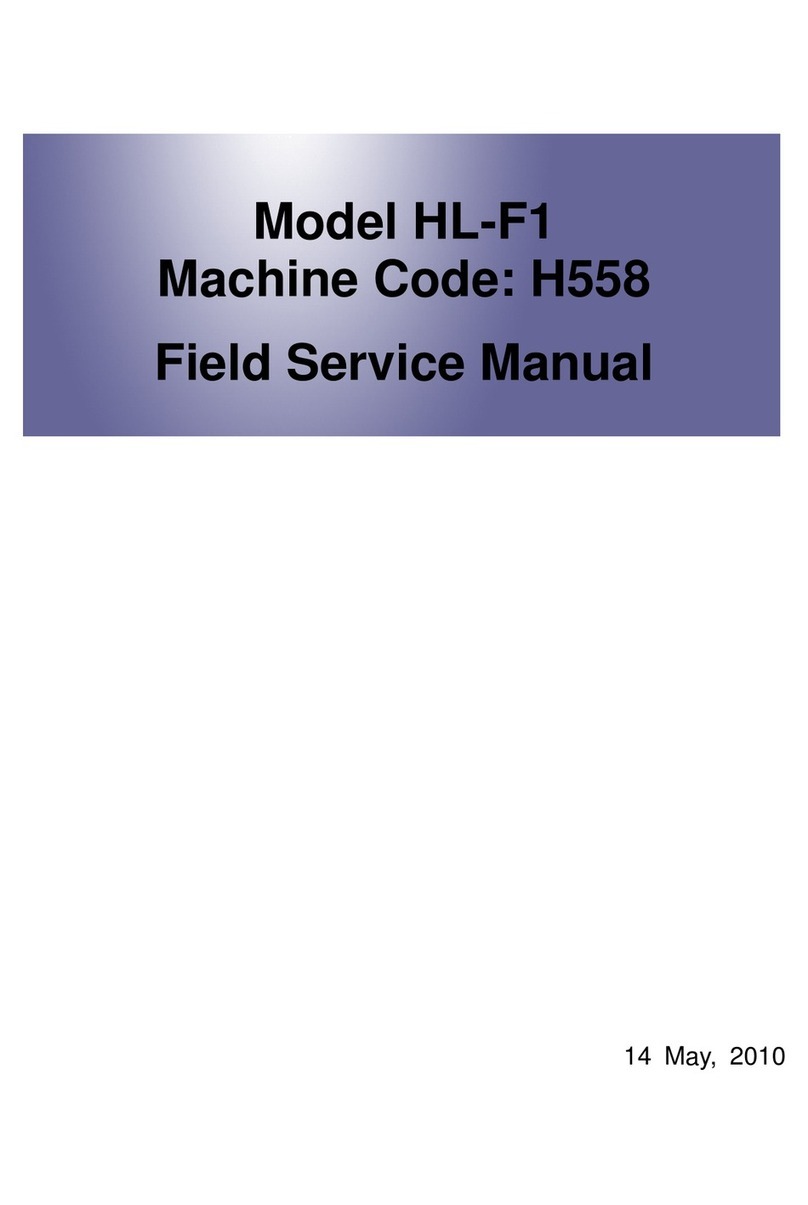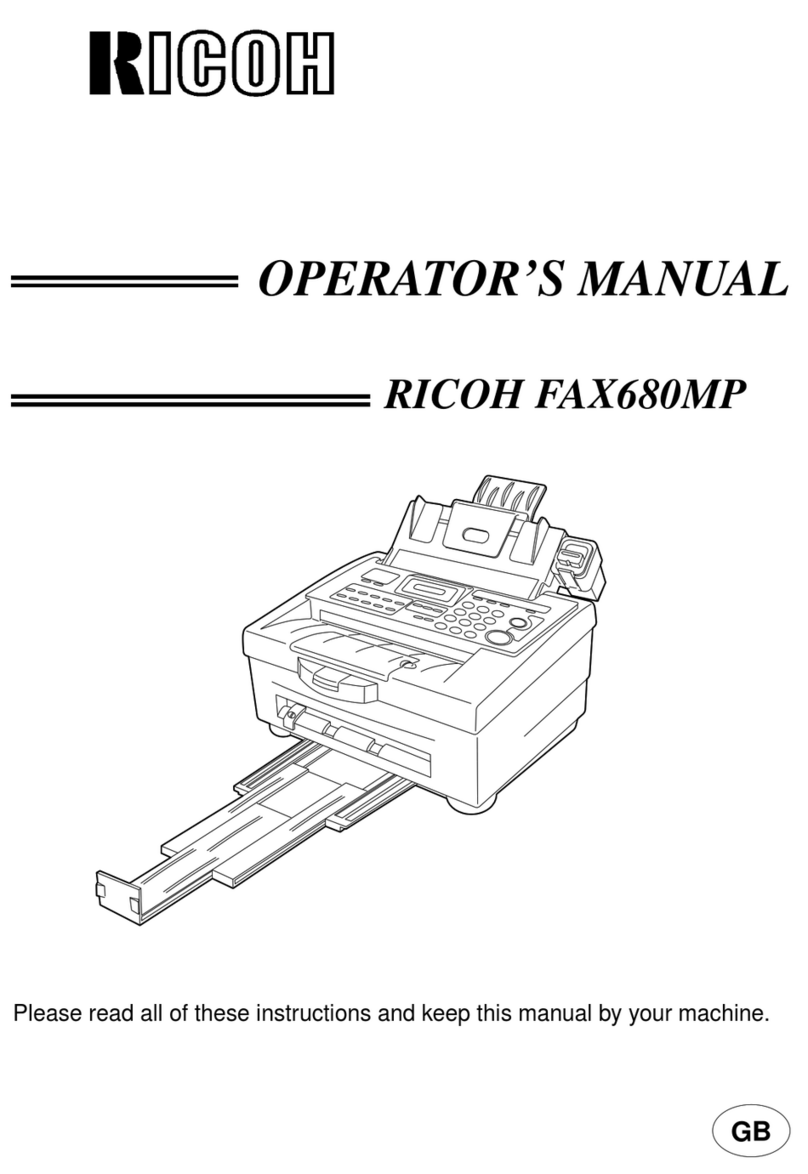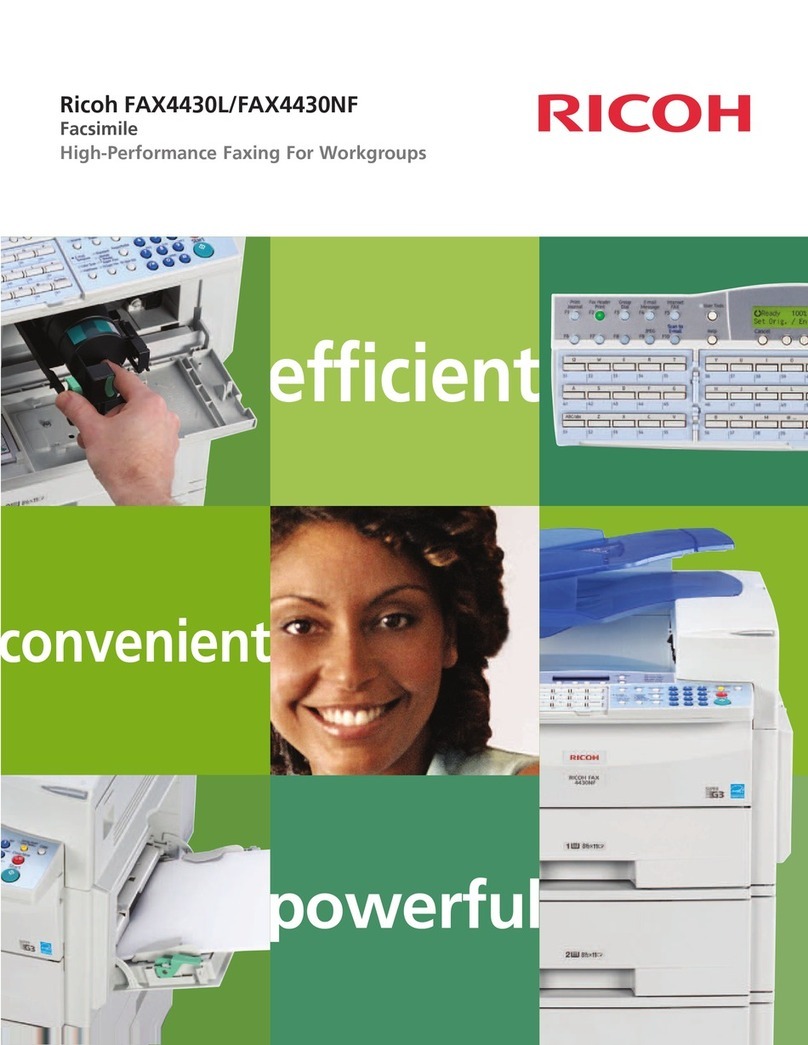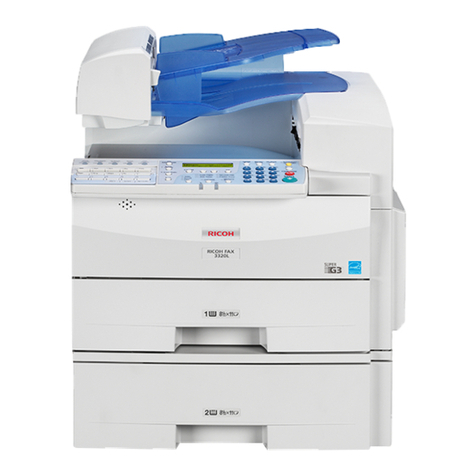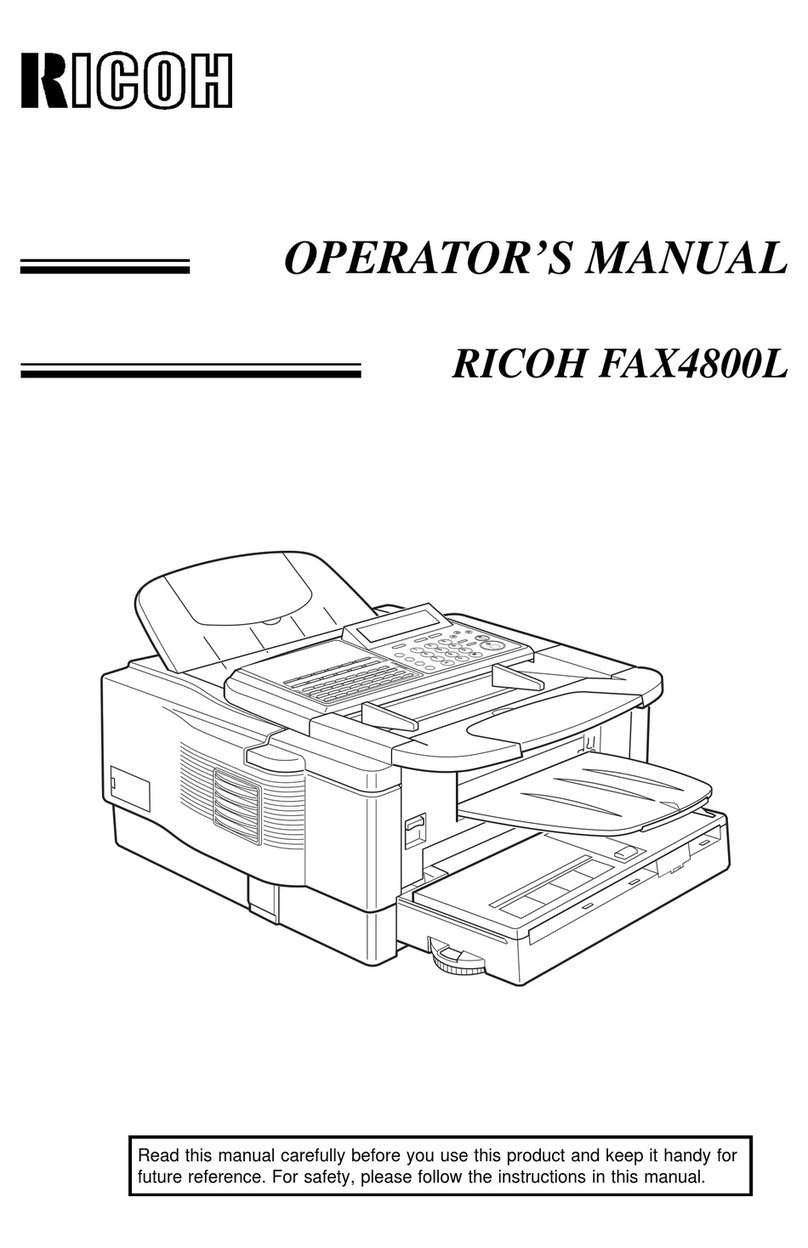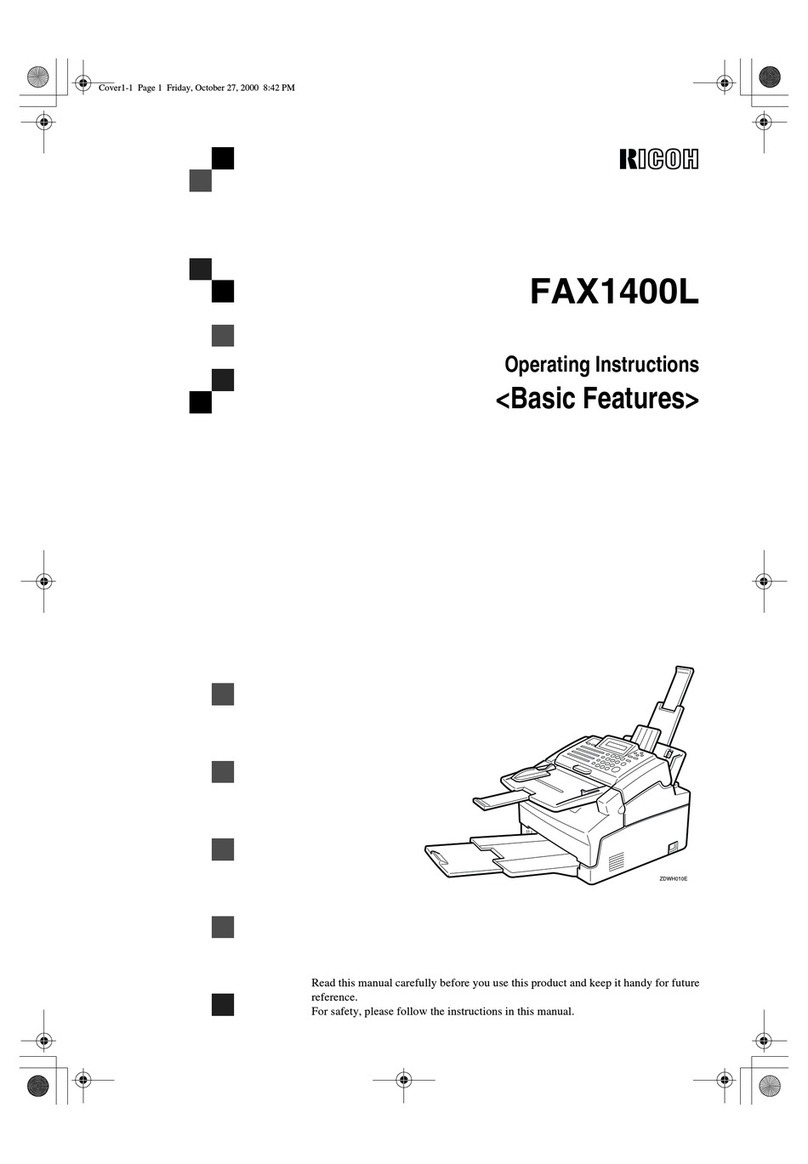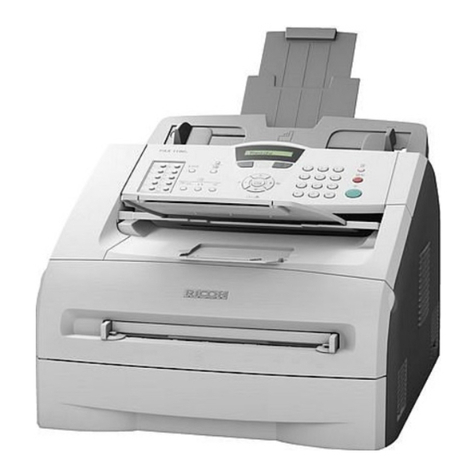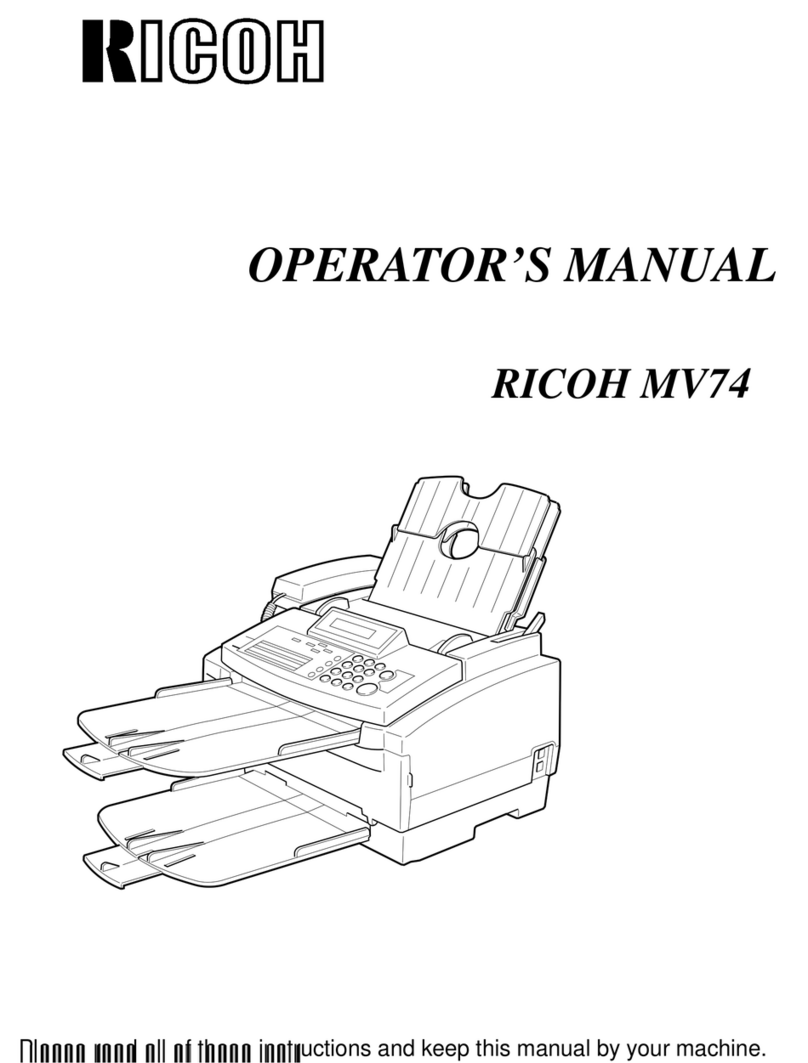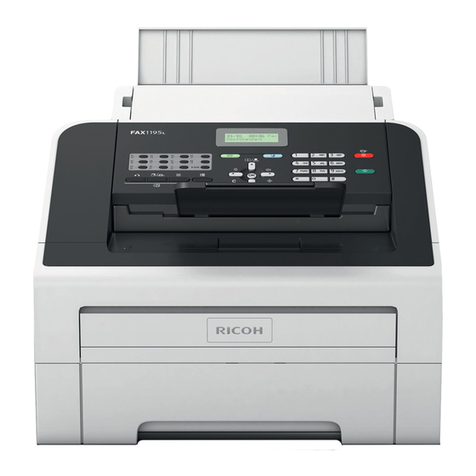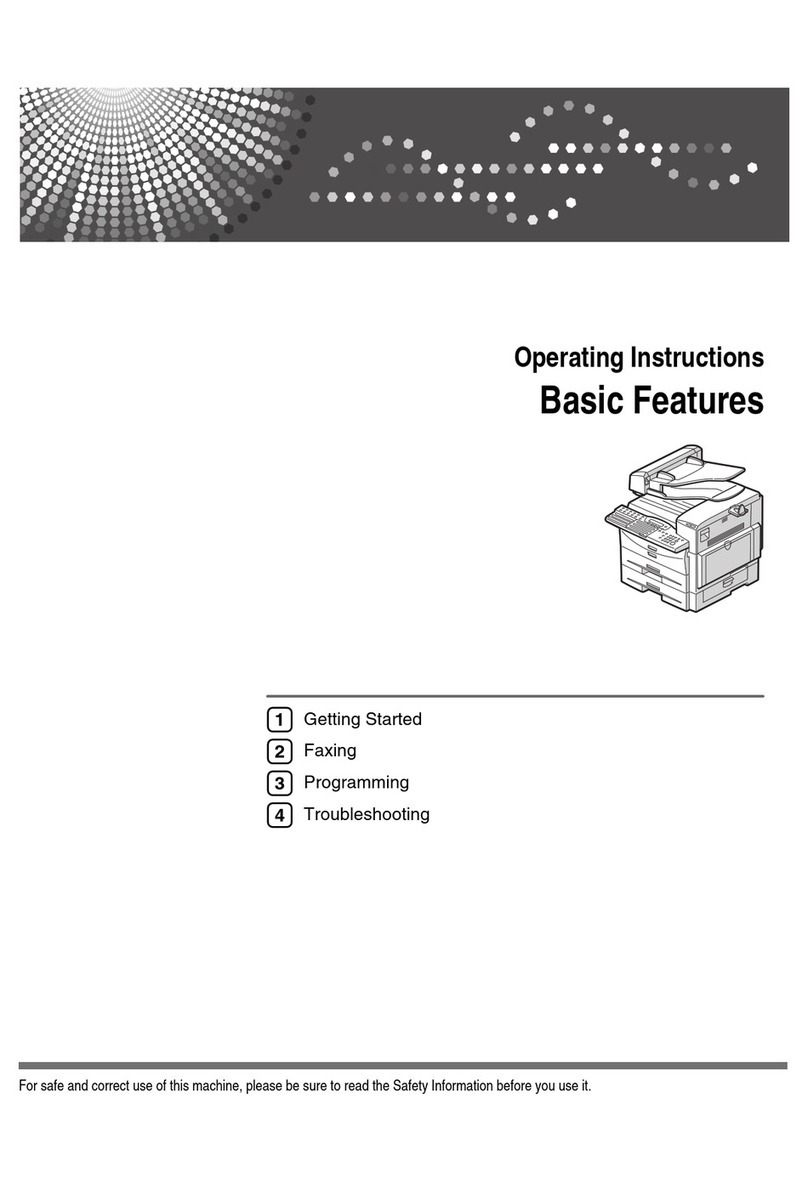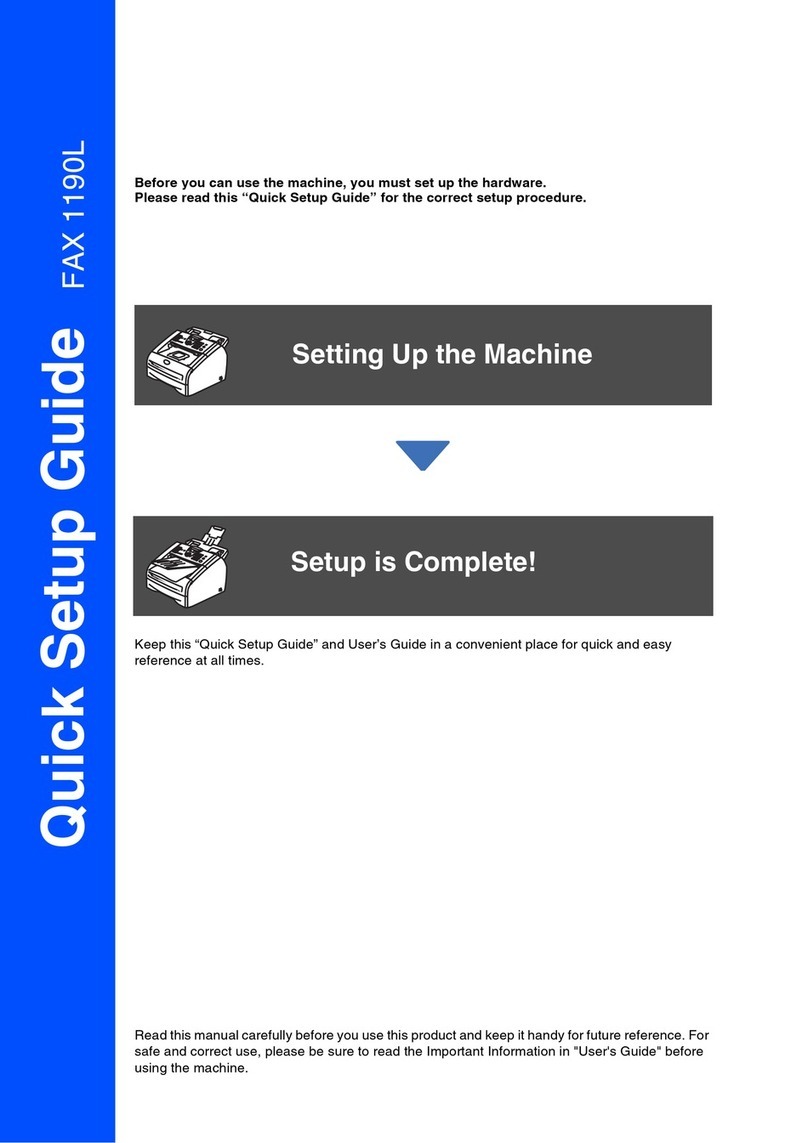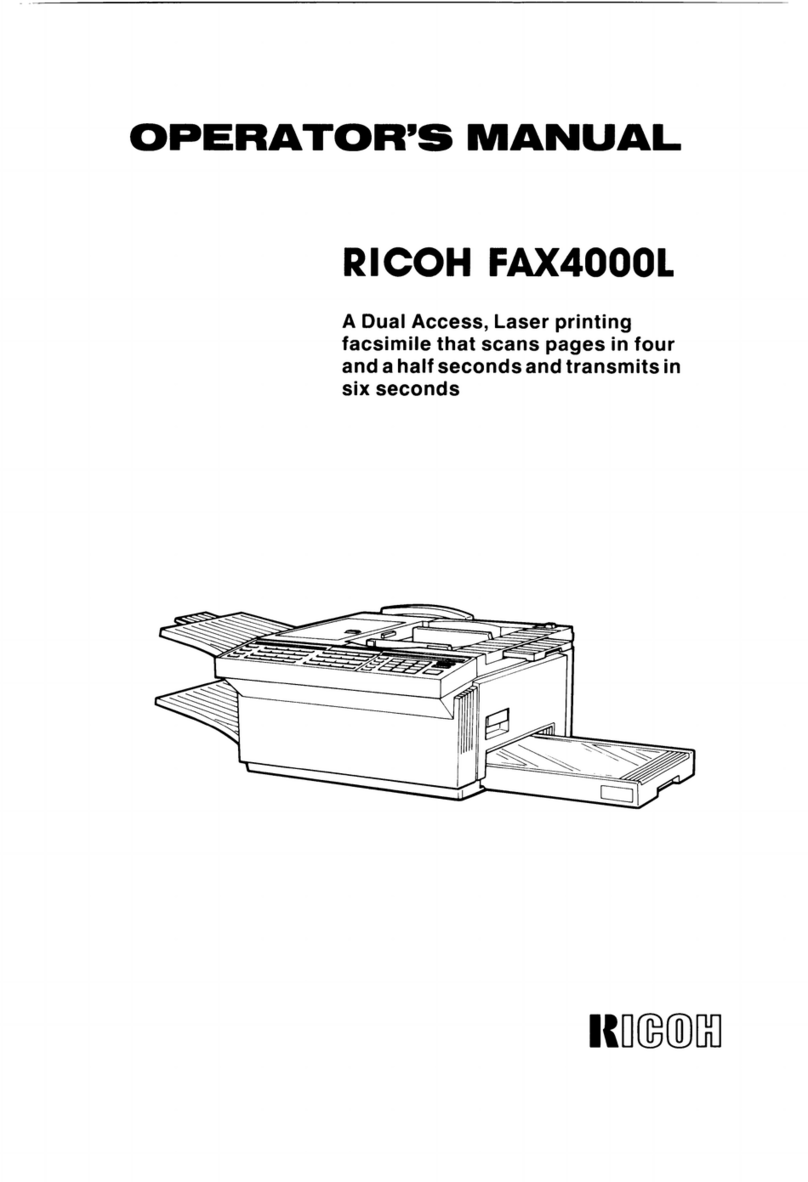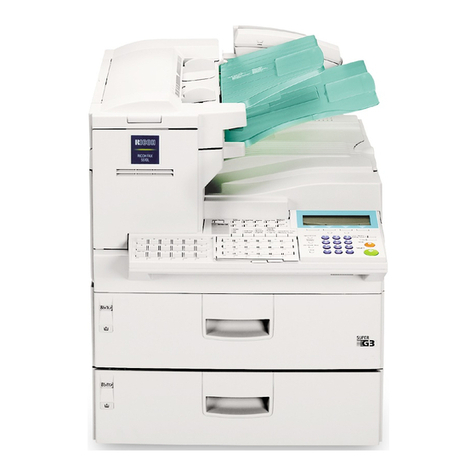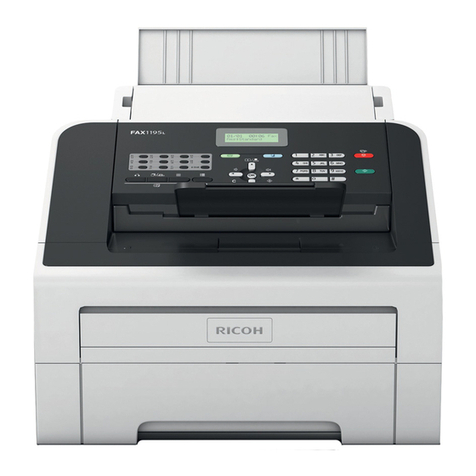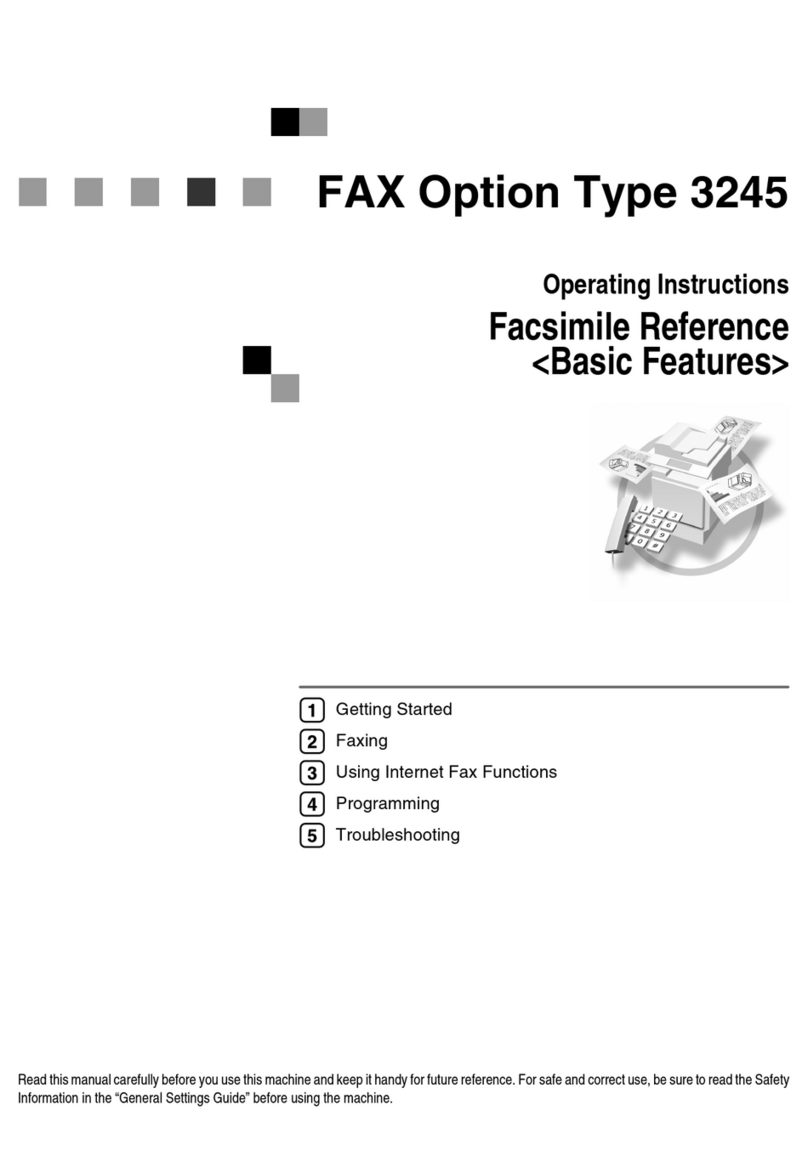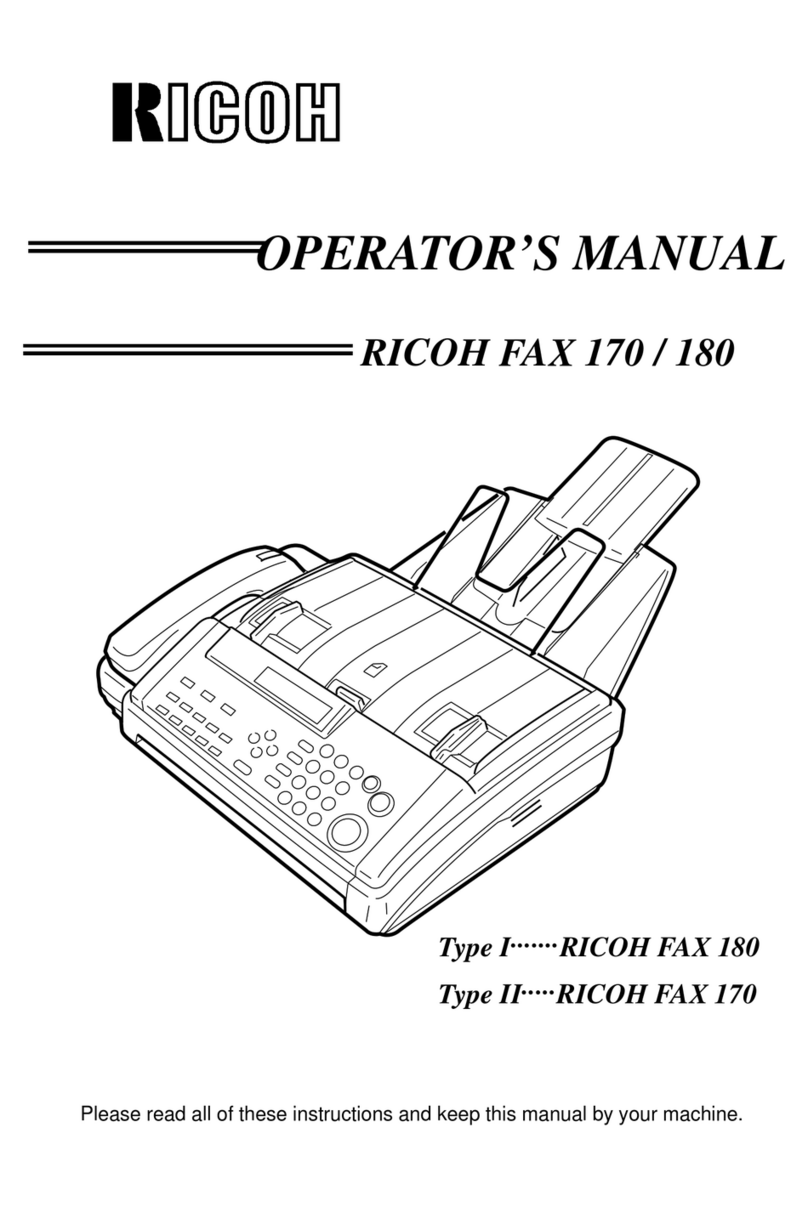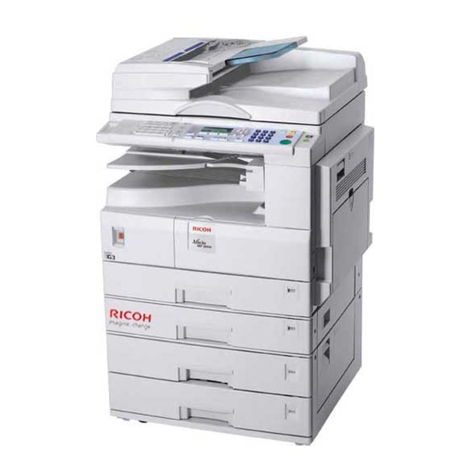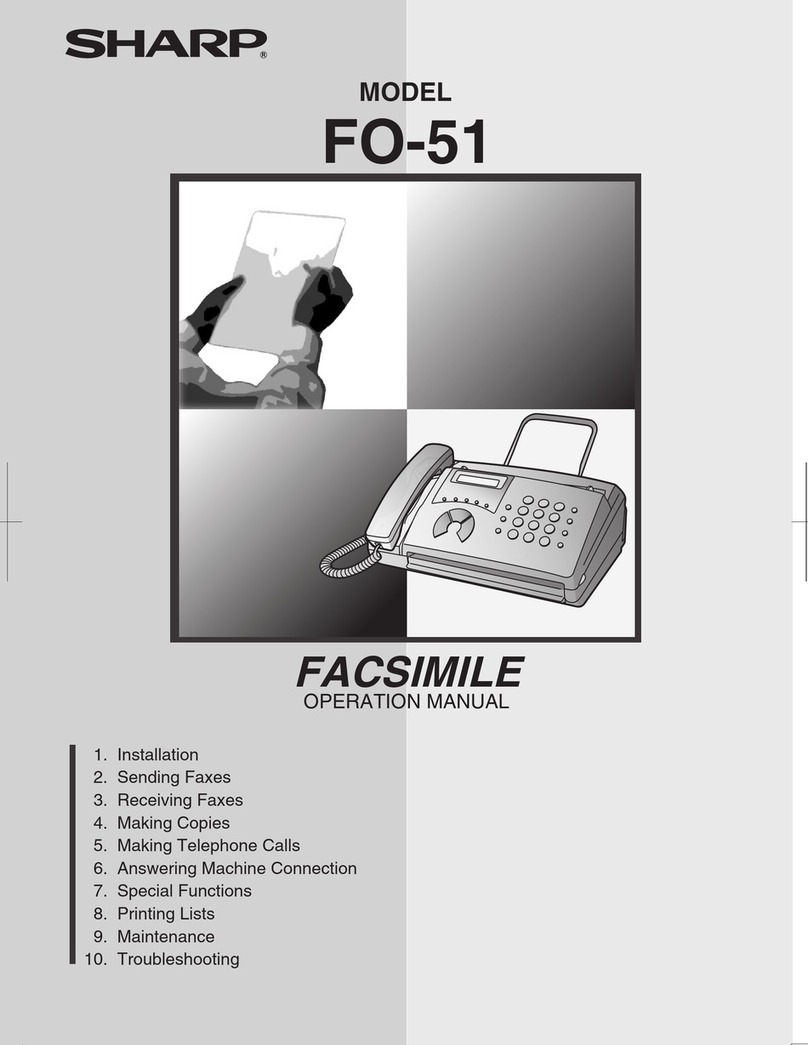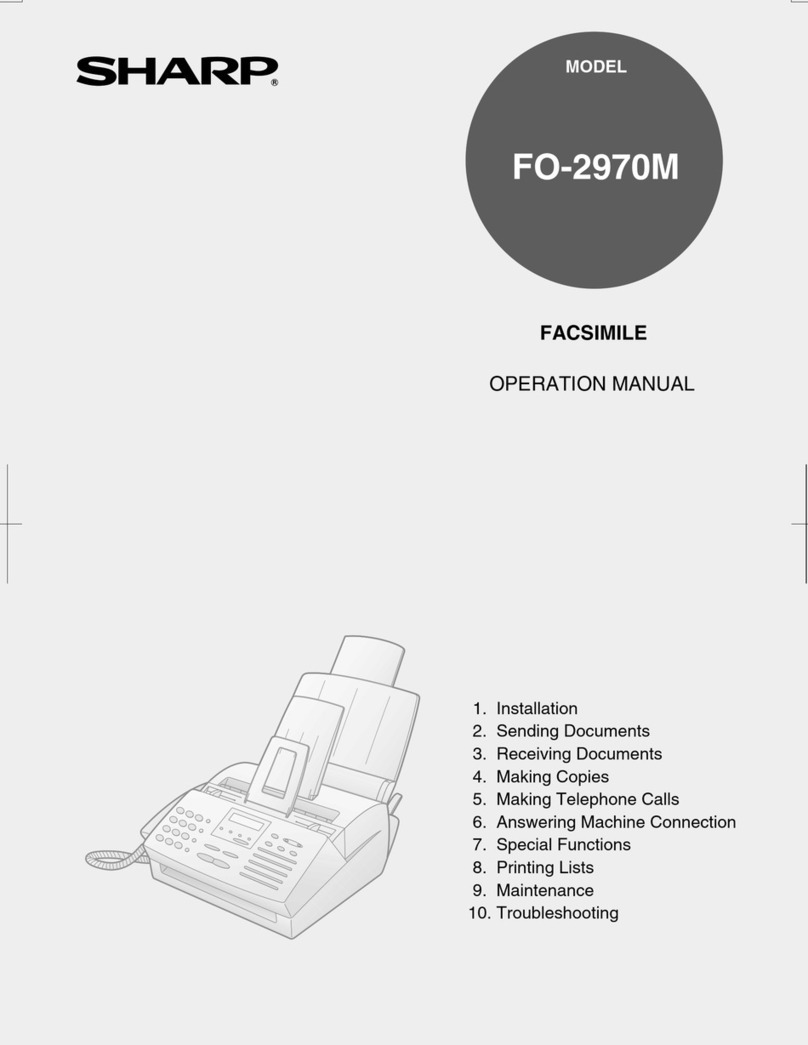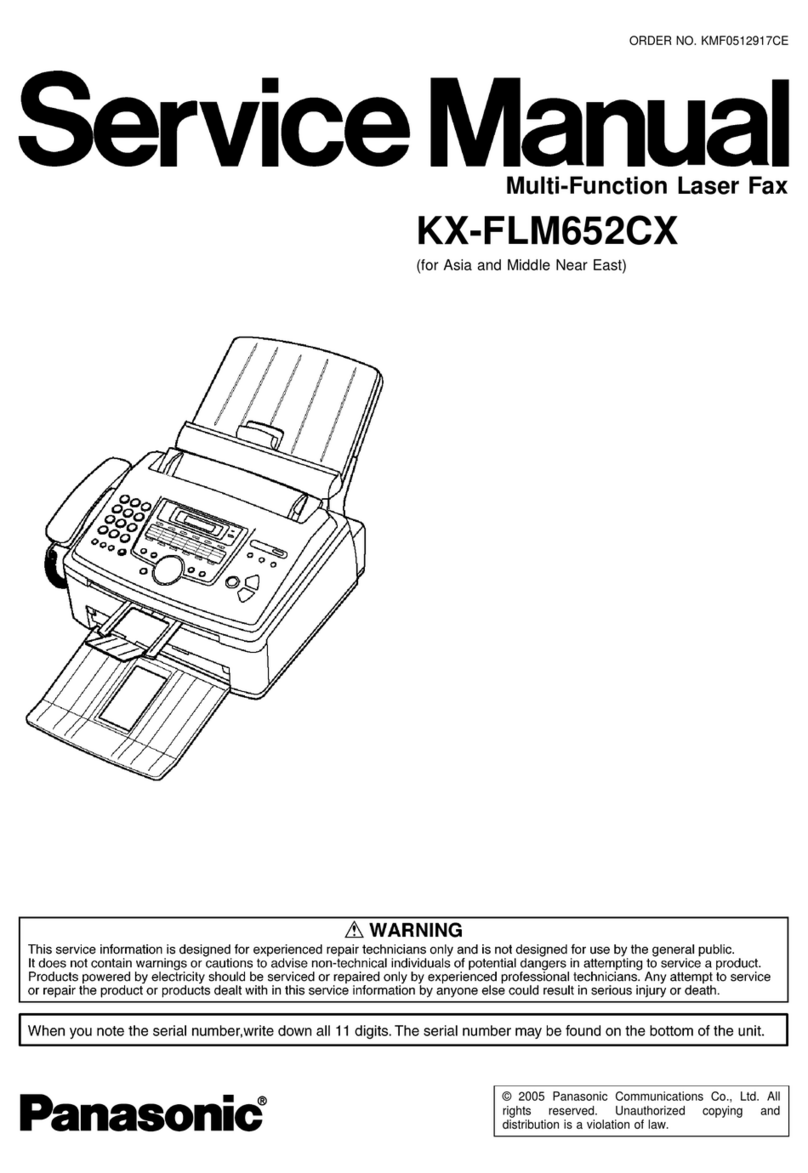1. OVERALL MACHINE INFORMATION
1.1. SPECIFICATIONS
Type
Desktop type transceiver
Circuit
PSTN, PABX
Connection
Direct couple
Document Size
Length:
105 - 355.6 mm [4.1 - 14 ins]
(automatic feed)
Up to 600 mm [23.6 ins] (manually assisted)
Width:
148 - 216 mm [5.8 - 8.5 ins]
Thickness:
0.05 to 0.2 mm [2 to 8 mils]
(equivalent to 50 - 90 g/m2)
Document Feed
Automatic feed, face up
ADF Capacity
30 sheets (using 20 lb. or 80 g/m2paper)
Scanning Method
Contact image sensor
Maximum Scan Width
204 mm [8.0 ins]
Scan Resolutions
Main scan: 8 dots/mm [203 dpi]
Sub scan:
Standard - 3.85 lines/mm [98 lpi]
Detail - 7.7 lines/mm [196 lpi]
Fine - 15.4 lines/mm [392 lpi]
Memory Capacity
ECM: 128 kbytes
SAF: 240 kbytes (18 pages/ITU-T #1 test
document), extra 1 Mbyte memory card
available (102 pages) or 2 Mbyte memory
card available (186 pages)
Compression
MH, MR, EFC, MMR, SSC
Protocol
Group 3 with ECM
Modulation
V.17 (TCM), V.29 (QAM), V.27ter (PHM),
V.21 (FM)
Data Rate (bps)
14400/12000/9600/7200/4800/2400
Automatic fallback
Transmission Time
6 s at 14,400 bps; Measured with G3 ECM
using memory for a ITU-T #1 test document
(Slerexe letter) at standard resolution
Printing System
Laser printing, plain paper, dry toner
Paper Size and Capacity
Standard Tray: 150 sheets
(using 20 lb. or 80 g/m2paper)
A4, Letter, Legal, F4
Paper Feed Unit (Optional): 250 sheets
(using 20 lb. or 80 g/m2paper)
A4, Letter, Legal
Maximum Printing Width
216 mm [8.5 ins]
Print Resolutions
Fax and Copy Mode:
Main scan: 16 dots per mm [406 dpi]
Sub scan: 15.4 lines/mm [391 lpi]
Power Supply
USA: (110 - 120 Vac) ±10%, 60 ±3 Hz
Europe/Asia: (220 - 240 Vac) ±10%,
50/60±3 Hz
Power Consumption (Base Machine Only)
USA: Maximum 390 W
Europe/Asia: Maximum 470 W
Operating Environment
Temperature: 15 - 25 °C [59 - 77 °F]
Humidity: 35 - 70 %Rh
Dimensions (W x D x H)
380 x 341 x 219 mm [15.0 x 13.4 x 8.6 ins]
Excluding handset, trays, and optional units
Weight
Approx. 7 kg [15 lb.]
Excluding consumables, handset, trays, and
optional units
July 24th, 1996 OVERALL MACHINE INFORMATION
SPECIFICATIONS
1-1

